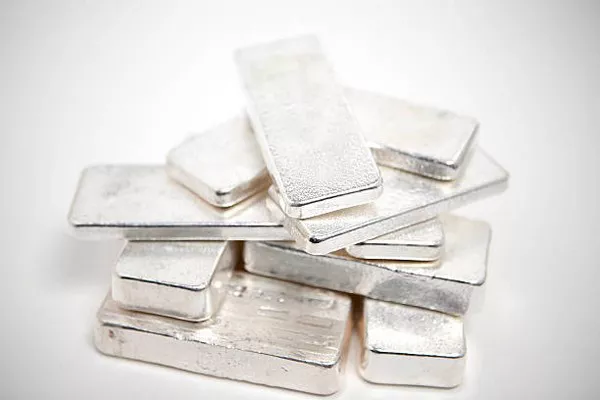Silver, often referred to as “the poor man’s gold,” has garnered significant attention from investors seeking alternative assets amidst economic uncertainties. The precious metal’s unique properties, coupled with its diverse industrial applications and historical significance, make it a compelling investment option. However, predicting the future trajectory of silver prices requires a comprehensive analysis of various factors that influence its value. In this article, we delve into historical price trends, economic indicators, supply and demand dynamics, investment demand, geopolitical factors, market analyst predictions, technical analysis, risk assessment, and investment strategies to ascertain whether silver prices are likely to continue rising.
Historical Price Trends
To establish a context for current trends, it’s essential to examine silver’s historical price movements. Over the past century, silver prices have exhibited significant volatility, influenced by various macroeconomic factors, technological advancements, and shifts in investor sentiment. Historical data reveals periods of rapid appreciation, such as the silver boom of the late 1970s, followed by prolonged periods of consolidation and correction. Understanding past price trends provides insights into potential future patterns and helps investors make informed decisions.
Economic Indicators
Global economic indicators play a crucial role in determining silver prices. Factors such as inflation rates, currency values, and interest rates can impact the attractiveness of silver as an investment asset. In times of high inflation or currency devaluation, investors often flock to precious metals like silver as a store of value. Similarly, fluctuations in interest rates can influence the opportunity cost of holding silver versus other investments. Monitoring key economic indicators provides valuable insights into the broader market environment and helps forecast future price movements.
Supply and Demand Dynamics
The balance between silver mining supply and industrial demand is another critical factor driving price fluctuations. Silver’s diverse applications in industries ranging from electronics and solar panels to medical devices contribute to its intrinsic value. Technological advancements and emerging market trends can affect demand dynamics, influencing silver prices accordingly. Conversely, fluctuations in mining output, geopolitical tensions, and regulatory changes can impact the supply side of the equation. Analyzing supply and demand fundamentals helps investors gauge the long-term outlook for silver prices.
Investment Demand
Investor sentiment and demand for silver-backed assets, such as exchange-traded funds (ETFs) and physical bullion, play a significant role in determining price movements. During periods of economic uncertainty or market turbulence, investors often seek safe-haven assets like silver as a hedge against volatility. The proliferation of ETFs offering exposure to silver has made it more accessible to a broader range of investors, further influencing price dynamics. Additionally, individual and institutional purchases of physical silver bullion contribute to overall demand and market sentiment.
Geopolitical Factors
Geopolitical events can exert a significant influence on silver prices by disrupting supply chains, affecting investor confidence, or altering market dynamics. Trade agreements, geopolitical tensions, and political instability in key silver-producing countries can create supply disruptions and price fluctuations. Similarly, sanctions or regulatory changes imposed by governments can impact the flow of silver in the global market. Monitoring geopolitical developments is essential for assessing potential risks and opportunities in the silver market.
Market Analyst Predictions
Market analysts offer a range of predictions and opinions on the future direction of silver prices, based on various fundamental and technical factors. Some analysts believe that ongoing economic uncertainties, coupled with increased investment demand, could propel silver prices higher in the coming years. Others argue that potential shifts in central bank policies, geopolitical tensions, or technological innovations may affect silver’s supply-demand dynamics and influence price movements. Assessing different viewpoints provides investors with a more comprehensive understanding of market sentiment and potential outcomes.
Risk Assessment
As with any investment, there are inherent risks associated with investing in silver. Price volatility, geopolitical uncertainties, and regulatory changes can all affect the value of silver holdings. Additionally, leveraged trading instruments and derivative products can amplify risks for investors. Conducting a thorough risk assessment helps investors identify potential pitfalls and implement risk management strategies to protect their investments. Diversification, proper asset allocation, and staying informed about market developments are essential components of effective risk management.
Investment Strategies
When formulating investment strategies for silver, investors should consider their risk appetite, investment objectives, and market outlook. Conservative investors may opt for a long-term buy-and-hold approach, focusing on physical silver bullion or ETFs as a hedge against inflation and economic uncertainty. More aggressive investors may explore trading opportunities in silver futures or options markets, capitalizing on short-term price fluctuations. Regardless of the chosen strategy, it’s crucial to conduct thorough research, diversify holdings, and stay disciplined in executing investment decisions.
See Also Where to Buy Silver Bars: A Comprehensive Guide for Investors
Conclusion
In conclusion, the outlook for silver prices depends on a multitude of factors, including historical price trends, economic indicators, supply and demand dynamics, investment demand, geopolitical factors, market analyst predictions, technical analysis, risk assessment, and investment strategies. While silver prices have shown resilience amid economic uncertainties and increased investment demand, potential risks such as supply disruptions or shifts in market sentiment could impact future price movements. Ultimately, investors should conduct thorough due diligence, assess potential risks and opportunities, and formulate investment strategies aligned with their financial goals and risk tolerance. By staying informed and adaptable, investors can navigate the dynamic landscape of the silver market and capitalize on emerging opportunities.


